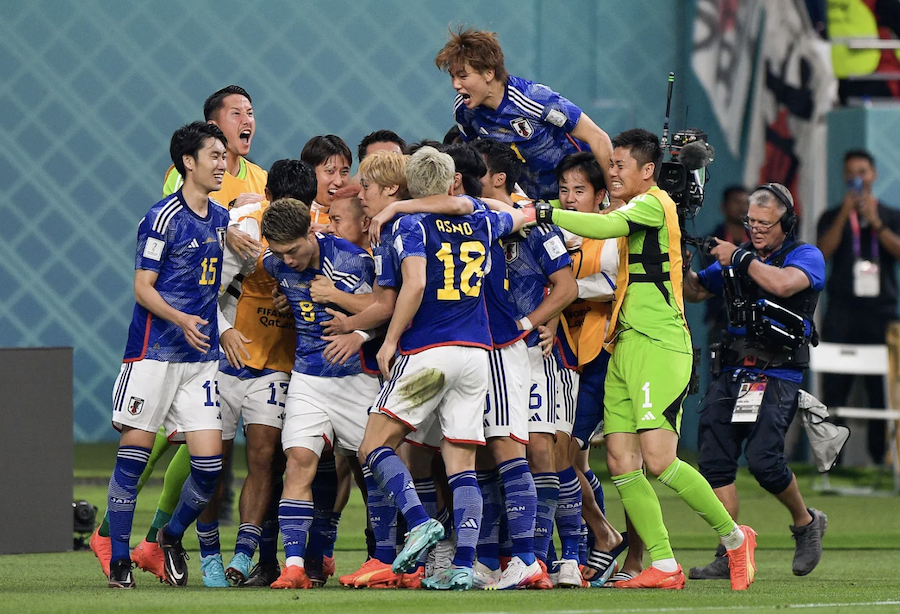.. DEMOCRATIC PARTICIPATION ..
Special for CPNN from Professor Alicia Cabezudo, Rosario, Argentina, December 2022 (translation by CPNN)
A Soccer World Championship has always been a “party” for the entire population of the world, whatever the age considered, gender, socio-economic and cultural condition that is analysed, geographical and climatic situation. For many days people live pending transmission schedules in all possible media, comments and sports press, results, bets, penalties, player names, generating endless meetings and talks about the infinite winning combinations.

Photo by Pablo Morano/BSR Agency/Getty Images
It is an obsessive topic among friends, neighbors, relatives, and fellow students and workers – turning the world’s greatest sporting event into a field for dialogue, criticism, defending positions, sharing hours of expectation, happiness and grief, physical and spiritual accompaniment, of solid and liquid food and where hopes, despair, misfortune, joy and expectations will be present.
It is a party that facilitates meeting, communication, the exchange of ideas and socializing tinged with affection. Invaluable practices in the entire teaching process.
It is an extraordinary opportunity in the educational task of parents, families, teachers, professors and communities to make this global sports festival a learning experience in itself. In such a way that the values of coexistence, respect for others, interculturality as social wealth, cultural differences and similarities and, above all, the enormous collective effort that being a good team implies, is also perceived as an ethical and political value, an urgent and necessary pedagogical dimension in today’s world.
(continued in right column)
(Click here for the Spanish original of this article)
(continued from left column)
We should be able to turn the Soccer World Cup into a space for democratic education where “soccer knowledge and experiences” are also an active, popular and irreplaceable pedagogical resource as a source of new learning and tools for understanding reality.
Tools with a resignified educational value according to possible didactic transfers and particular disciplinary applications according to the various areas of knowledge and even the specific school curriculum at all levels of formal education and in the field of non-formal learning.
Knowledge about other countries, their position and geographic characteristics; its form of government and laws; art, folklore and customs; the various religions and cults; past and present history with the problems of the world in which we live; economic links; trade; the arts ; common science and technology; The global problems that afflict everyone and the collective search for solutions, as well as many other topics of interest, open up new possibilities for analysis, reflection and creative dialogue inside and outside of schools and in all areas where we meet and meet.
Understanding diversity and differences; the multiplicity of ways of life and visions of the world; the different civilizations and their manifestations; the richness of the diverse cultures that these multicolored, multilingual, multireligious soccer teams represent, with men so different and so absolutely interdependent that they esteem and respect each other, creates the possibility of an enriching pedagogical dialogue and demonstrates a lesson in political pluralism, religious and cultural that enriches every educational process and is part of the civic-democratic training of children, youth and adults in current education.
The construction of these values, the defense and international recognition of the free self-determination of peoples, the right to peace, respect for human rights as international law and learning about the collective and united effort of men as creators of socio-political, economic and cultural transformations are part of this pedagogical proposal that should be added to the merely sporting one.
It is time for today’s world to become a huge solidarity football team, where each “player” contributes from his “position” to the necessary and urgent collective construction of a harmonious, balanced and cooperative result through the practice of a game. clean, mutual help, respect for others and sensitivity to their needs and problems.
In this way the game would probably make more sense, giving the world exemplary vital lessons in human warmth, teamwork, collective spirit and efficiency – which is exactly what is sorely lacking and . . . what we need so much.
Let us consider this pedagogical challenge without hesitation. . .
“Cultures of peace” or “culture of peace”: which expression is preferable.
In this article, Alicia Cabezudo uses the plural term “cultures of peace”, no doubt to indicate that each country and region strives to obtain a culture of peace that retains and builds upon its own unique history and traditions.
In CPNN, in general, we use the singlular term “culture of peace”to indicate that a culture of peace cannot long survive in only one particular region, but needs to be developed universally. Since the culture of war is inter-connected on a global level, it will continually strive to destroy local cultures of peace. For example, in Latin America, this has been evident over the years in the attacks on cultures of peace in Allende’s Chile, Fidel’s Cuba, Chavez’ Venezuela, Morales’ Bolivia, etc. In general, the struggle for a culture of peace cannot finally succeed without the struggle to eliminate the global culture of war.
It seems to us that both terms make sense. The culture of peace must retain and build upon the unique history and traditions of each people. And cultures of peace must eventually be part of a global culture of peace if they are to survive.
In this context, it is useful to recall the expression, “act locally, think globally.” The global concept of the culture of peace, as defined by its United Nations resolution, provides the inspiration for the actions for “cultures of peace” on a local level, while the actions on a local level are necessary for the achievement of a global “culture of peace.”